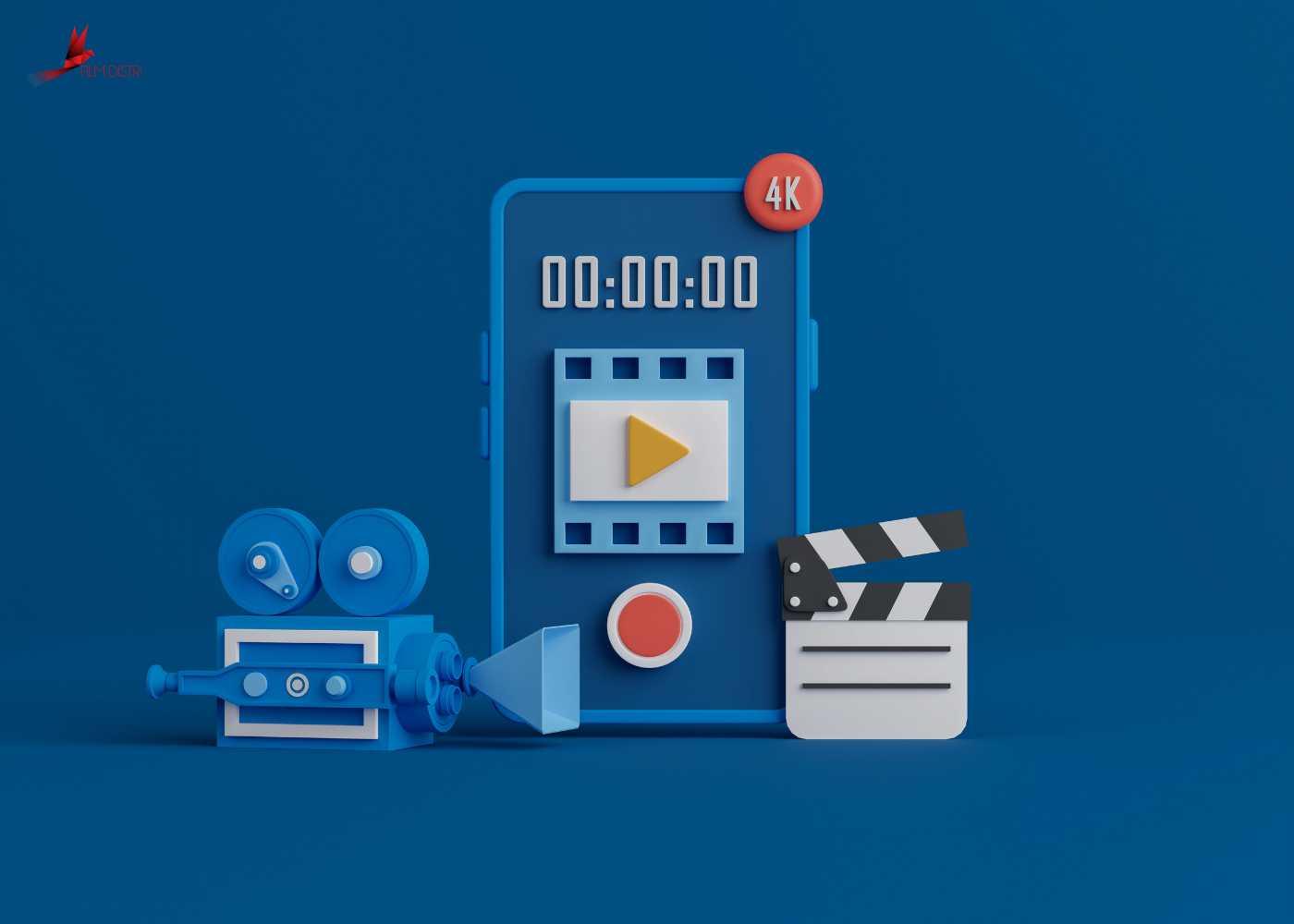How has technology altered the movie business? In less than 200 years, technological and film breakthroughs have taken the moving picture from being nonexistent to being there all the time, beginning with the earliest days of sequential photography, proceeding through the advent of sound and colour, and culminating in the birth of CGI.
Why stop now, then?
We'll give you a brief overview of filmmaking technologies in the future in this article. As we break down 7 new film technologies affecting the entertainment business, we'll highlight a few to keep an eye on and consider how they might transform the way movies are made.

Let's start now.
1. Using Algorithms to Edit Videos
The future of post-production is still closely tied to its history, even though most new technology in the film business is disruptive by nature. Algorithmic editing is a mix of contemporary science and traditional ideas, much like many other advancements in film editing technology before it.
Fundamentally, algorithmic editing simply refers to the act of editing in accordance with a set of clearly laid out guidelines. It's like cutting your movie with math, not unlike to the renowned method used by Sergei Eisenstein, a fervent formalist and acknowledged pioneer of Soviet montage, back in 1925. You would be hard pressed to find a contemporary movie that doesn't use at least a couple of Battleship Potemkin's schematic editing concepts, despite the fact that most films avoid its formal rigidity.
To put it another way, algorithmic editing features are already commonplace in post-production.
However, technological advancements in film profoundly alter the rules of the game.
Computer programming languages are becoming more and more interwoven into the future of filmmaking technology due to the increasingly digital nature of modern film technologies. If computer programmes are essentially elaborate collections of straightforward instructions, there are countless editing-related applications for them.
Using an algorithm, video editing software can automatically chop clips to fit a certain aesthetic. By using visual identifiers, such as faces or landscapes, it is possible to arrange the massive amount of footage taken during documentary production. In some circumstances, it can also be used to edit previously recorded dialogue delivered by a performer.
While automated post-production is unlikely to take over anytime soon, algorithmic film technology is finding more and more practical uses in the entertainment business. Tech-savvy editors have yet another tool at their disposal to streamline the post-production process: algorithmic video editing.

2. 3D printing
The use of 3D printing in movies is evidence that new technology rarely originates in the movie business.
3D printing, once the stuff of science fiction, started out as a potential production and prototype option in the 1980s. Today, we can print anything with this technology, even organ tissues and action figures.
In the film industry, 3D printing is a new technology that is being used to push the boundaries of costume and prop creation. The distinct advantages of this new technology allow artists to create three-dimensional items with a level of detail that would take endless hours of manual effort to reproduce by hand. Additionally, these products may be changed and improved upon easily thanks to 3D printing.
3D printing joins cinema history's most important cinematic advances as a way to simultaneously save time, cut expenses, and boosts creative freedom by bridging the gap between digital imagination and physical reality.
In the rapidly developing field of filmmaking technology, 3D printing is a straightforward yet essential tool.
3. 3D Previsualization
The new cinema technology of 3D previsualization is the exact opposite of 3D printing, which turns digital ideas into actual reality.
The pre-production stage of a live-action production is completely transformed by 3D previs (also known as pre-viz), which creates fully immersive digital versions of the sets and locations that will be used.
The digital environments of 3D pre-viz provide filmmakers the freedom to explore and try new things on their own schedule and without having to spend extra money. Using 3D previsualization technology, directors may improve visual designs, production designers can boost construction precision, directors of photography can eliminate guessing from technical solutions, and producers can optimize the logistical flow of the entire production.
Before now, 3D previsualization techniques were incredibly expensive and time-consuming, which severely restricted their use as film technology in the entertainment business to only the top budgetary levels. However, 3D pre-viz is now more widely available than before.
Its open-ended software solutions will inevitably carve out more innovative and effective uses as they become more widely adopted in filmmaking technology.

4. Rendering in Real-Time
A key component of the new cinema technology connected with virtual production, an up-and-coming collection of techniques through which filmmakers seamlessly blend virtual and real-world elements, is real-time rendering. Real-time rendering is a cutting-edge technological advancement that enables changes to be made to a digital environment almost instantly, without the cumbersomely long render periods that traditionally hampered the cinema CGI workflow.
A crew's capacity for collaboration and experimentation may be dramatically increased by real-time rendering, which opens the door to an infinite procession of film advances. Filmmakers can now work more quickly, with greater accuracy, and with a wider range of possibilities than ever before since they can monitor and modify interactions between physical and digital components in actual real time.
While the most thrilling instances of the most recent film technology incorporate real-time rendering, this new film technology was developed in response to the technical demands of the video game industry. The future of filmmaking technology is being shaped by both the Unreal Engine and Unity, which have tapped into the 3D flexibility of video games.
Real-time rendering is altering the debate in "tech in entertainment" circles all across the world, from classic animation to green screen to hybrid filmmaking styles that are only now emerging.
5. The Internet of Things.
The phrase "Internet of Things" (IoT) is used generically to describe how different physical things are connected to one another across a communication network using sensors and software. The Internet of Things permeates most aspects of our technologically enabled life, from smartphones to somewhat autonomous doorbells.
And the same is true of filmmaking.
Since many years ago, wireless networking has been quietly transforming the typical movie set. In all but the lowest-budget films, mobile video villages, focus rigs, and even camera control systems are now commonplace. These devices, like with many others, have only lately developed intelligence.
IoT solutions aren't exactly regarded as "new" technology in the film business, but their potential applications are expanding in scope and complexity.
For example, Internet of Things-based solutions can assist COVID safety officials in tracking down contracts by keeping an eye on worker movements. IoT solutions, on the other hand, can effectively track the movement of equipment.
According to one study, the Internet of Things might potentially gather detailed metadata that would enable "compelling new consuming experiences that are personalized, location-aware, interactive, and multi-screen" to be produced.
So, how has technology altered the movie business?
The Internet of Things may eventually be able to provide us with more information than we ever thought we needed.

6. Volume Technology
The Volume may be the most fascinating new technology in the movie business right now. With the exception of a few high-profile, high-budget films like The Mandalorian and The Batman, this newest cinematic technology is still hot off the creative press.
Volume technology is the use of enormous LED walls to playback pre-recorded pictures in the background of a shot while live-action elements are being filmed in the foreground. This technique is intended to generate a seamless, in-camera composition of physical and digital elements. Rear projection, an antiquated film method, operates on a same fundamental idea, but with digital enhancements and none of the significant limitations.
The Volume's LED wall technology offers an easily customizable and highly immersive digital filmmaking solution, speeding up production times and enhancing the realism of VFX. It does this with the help of real-time rendering, the Internet of Things, virtual production tools, and the most recent advancements in camera technology.
7. The Camera
Although the camera is arguably the oldest piece of filmmaking equipment, it is also the most active. Camera technology is continually pushing the once-simple equipment over its preconceived boundaries.
Just keep this in mind:
Before they were smaller, more transportable, and more advanced, cameras were once the size of a room. Today, iPhones are used to capture entire movies, and mounting cameras on flying robots is so commonplace that you might need to purchase drone insurance.
Just to be clear, that is the film industry of right now, not of tomorrow.
The alchemy of photo science is currently being experimented with by designers, manufacturers, and home-brewed amateurs alike to produce novel and unexpected effects.
A Steadicam's power can be held in anyone's hand, and AI is used to finely draw focus on cameras like the upcoming DJI Ronin 4D. These cameras are combining features and capabilities in ways that many would have previously considered inconceivable.







